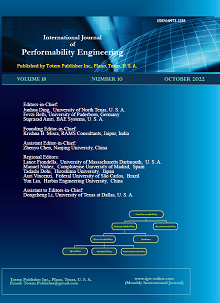-
Online Document Content and Emoji-Based Classification Understanding from Normal to Pandemic COVID-19
- Shelley Gupta, Archana Singh, and Jayanthi Ranjan
-
2022, 18(10):
710-719.
doi:10.23940/ijpe.22.10.p4.710-719
-
 Abstract
Abstract
 PDF (668KB)
PDF (668KB)

-
References |
Related Articles
There has been a substantial amount of online discussion regarding the COVID - 19 pandemic. This perpetual restoration transition due to coronavirus disease has led to discussions on communal, fiscal, emotional and mental gratification of human beings. The disease has transformed the physical mode of communication among people to an online mode completely, involving greater use of emojis. Emojis are used extensively with text to express health conditions, prayers, ambulance, soaps, police, danger, facial expressions, sentiments, etc. To the best of our familiarity, the proposed work focuses on the importance of emojis for expressing sentiments. In this paper, the online document of 650 personages consisting of 1, 68,548 (what is this number?) tweets without COVID - 19 terminologies and 67,819 tweets dataset sample of COVID - 19 terminologies have been explored. The portrayal of emotions via emojis plays an important role. This promoted us to contribute a framework to categorize the numerous social media documents in to major categories: ‘Online Document Content Class, ODCC’ i.e., categorizing the different social media documents as text only, emoji only, and both text and emoji. This classification has been strengthened by analyzing the tweets of three major regions across the world. The hypothesis testing identifies the significance of emojis in the sentiment analysis during COVID along with superior productive way of tweets categorization. The results illustrate that online users of European region used the emojis most. The proposed approach presents precision of social media expression sentiment score and polarity evaluation is completely accomplished by considering text with emojis as well.

